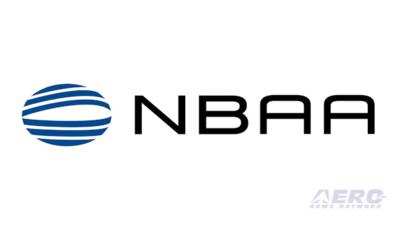Looks For Additional Information On Bonus Depreciation And Deduction Allowances
The NBAA is requesting guidance from the IRS and Department of the Treasury on several provisions of the Tax Cuts and Jobs Act that directly affect business aviation.

In a letter sent recently to the IRS and Treasury Department, NBAA focused its guidance requests on two main areas: 100 percent bonus depreciation, and the disallowance of deductions for certain entertainment and commuting expenses.
Last year, NBAA successfully advocated for the extension of 100 percent bonus depreciation to used property as part of tax reform. Under the law, ownership of the used property must start with the taxpayer – in other words, while the property can be used, it has to be new to the taxpayer claiming the depreciation. In the guidance request, NBAA explained that incidental use by the taxpayer of the used property should not disqualify it from bonus depreciation.
“For example, there are situations where a taxpayer could charter or conduct a demonstration flight on a business aircraft that it later acquires,” NBAA wrote in its request to the IRS. “For these types of flights, the taxpayer would not be the operator of the aircraft, so the aircraft should not be viewed as having been ‘used’ by the taxpayer for purposes of the original use requirement.”
NBAA also sought guidance on technical issues related to the bonus depreciation provision, such as effective dates and self-constructed property.
Other sections of the tax reform law that will affect business aviation include provisions that disallow employer deductions for business entertainment and commuting expenses. NBAA requested guidance to clarify how these provisions will apply and to assist with tax administration.
On the business entertainment issue, NBAA urged the IRS to issue guidance that clarifies how trips are treated when there is a combination of activities, only some of which are entertainment. “For example, if an employee travels to a business meeting, and one evening during the trip the employee goes to a movie for entertainment, the company should not be subject to a disallowance for the travel costs related to the trip,” NBAA wrote. “Only the cost of the movie ticket should be a non-deductible entertainment expense.”
For the commuting expense disallowance, NBAA explained that since business flights often include travelers with different destinations and purposes, it makes sense to look at the specific marginal costs to the employer of providing the commuting benefit. “For example, suppose an employer provides a flight on the company plane for five employees from its headquarters location to destination A. At destination A, four of the employees attend business meetings, while one of the employees is commuting to destination A.”
NBAA argued that in the above situation, only the marginal cost of providing the commuting flight to the employee, which would be negligible, should be disallowed.
“While the Tax Cuts and Jobs Act provides significant benefits to business aviation, there are also challenges as the industry seeks to understand the complex legislative changes," said NBAA’s Senior Director of Government Affairs Scott O’Brien. “This guidance request is critical as it lays out NBAA’s positions on the tax reform issues of most interest to our members.”
(Source: NBAA news release)
 ANN's Daily Aero-Term (05.29.25): Terminal Radar Service Area
ANN's Daily Aero-Term (05.29.25): Terminal Radar Service Area ANN's Daily Aero-Term (05.30.25): Very High Frequency (VHF)
ANN's Daily Aero-Term (05.30.25): Very High Frequency (VHF) Aero-News: Quote of the Day (05.30.25)
Aero-News: Quote of the Day (05.30.25) Airborne 05.23.25: Global 8000, Qatar B747 Accepted, Aviation Merit Badge
Airborne 05.23.25: Global 8000, Qatar B747 Accepted, Aviation Merit Badge ANN's Daily Aero-Linx (05.30.25)
ANN's Daily Aero-Linx (05.30.25)



